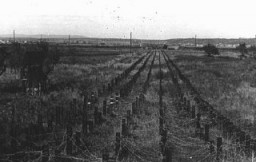
Photo
Browse an alphabetical list of photographs. These historical images portray people, places, and events before, during, and after World War II and the Holocaust.
<< Previous | Displaying results 11-20 of 228 for "Photo" | Next >>
-
Page from the Stroop Report
PhotoA page from SS officer Juergen Stroop's report on the Warsaw ghetto uprising. He wrote: "This is what the former Jewish residential quarter looks like after its destruction." Warsaw, Poland, April-May, 1943.

-
Pages from a child's diary
PhotoIllustrated page of a child's diary written in a Swiss refugee camp. The diary entry describes how they crossed the border into Switzerland. The text reads, "We came out of the woods and into a clearing: we had to be as quiet as possible because we were so close to the border. Oh! I almost forgot! Before we came out of the woods, they made us stand still for a quarter of an hour while they went to explore the area and to cut through the fence. Fortunately, shortly thereafter, we began to walk again. We saw…
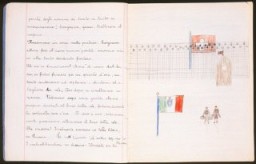
-
Painting entitled “Gassed,” By John Singer Sargent, 1919
PhotoWorld War I (1914–18) saw the first use of poison gas as a weapon of war. In this oil painting, John Singer Sargent depicted the aftermath of a mustard gas attack on British soldiers during a battle in August 1918. A line of soldiers, with bandaged eyes injured by the gas, hold on to one another as they are led to medical treatment. Around them are rows of other soldiers injured by the effects of the mustard gas, which could cause injuries such as burns and temporary blindness. © IWM (Art.IWM ART…

-
Painting of the Vltava River in Prague by Theresienstadt prisoner Bedrich Fritta
Photo1943 painting of the Vltava River in Prague created from a photograph by Bedrich Fritta when he was imprisoned in Theresienstadt. Fritta (1909-1945) was a Czech Jewish artist who created drawings and paintings depicting conditions in the Theresienstadt camp-ghetto. Fritta was deported to Auschwitz in October 1944. He died there a week after his arrival.
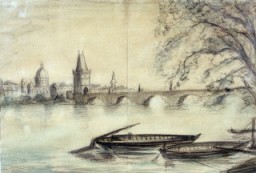
-
Panzer tanks of Erwin Rommel's Africa Corps
PhotoPanzer tanks of Erwin Rommel's Africa Corps during an advance against British armed forces. Libya, 1941-1942.
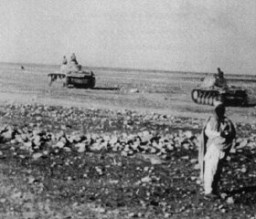
-
Parachutists from Palestine
PhotoHaviva Reik and other parachutists from Palestine, under British command, sent to Slovakia to aid Jews during the Slovak national uprising. Hayim Hermesh (left), Haviva Reik (second from left), Rafi Reiss (behind Reik), Abba Berdichev (second from the right), and Zvi Ben-Yaakov (right), on the Tri Duby airfield before being sent to Slovakia. Czechoslovakia, September 1944.
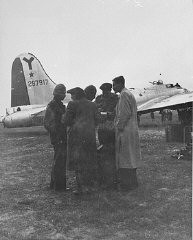
-
Park bench marked "Only for Jews"
PhotoA woman who is concealing her face sits on a park bench marked "Only for Jews." Austria, ca. March 1938.
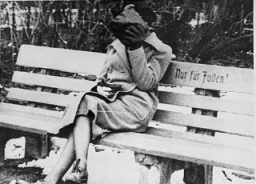
-
Part of the Buchenwald camp
PhotoA view of the Buchenwald concentration camp after the liberation of the camp. Buchenwald, Germany, after April 11, 1945.
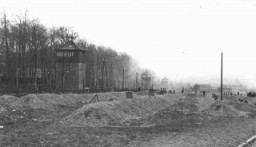
-
Part of the Der ewige Jude exhibition
PhotoAt Der ewige Jude (The Eternal Jew), a Nazi anti-Jewish propaganda exhibition, a case features "typical Jewish external features." Munich, Germany, November 1937.
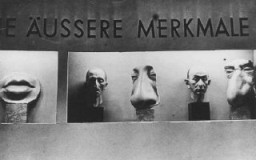
-
Part of the Maginot Line
PhotoA view of part of the Maginot Line, a French defensive wall built after World War I. It was intended to deter a German invasion. France, ca. June 1940.
